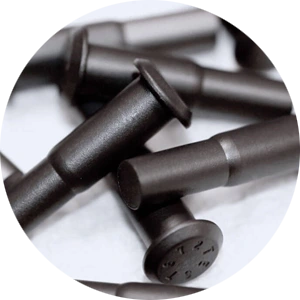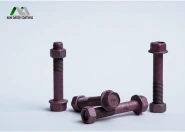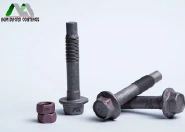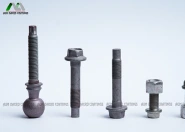Our Market and
Product Details
Zinc flake coatings
Overview
What is Zinc Flake Coating?
Zinc flake coatings consist of a combination of zinc and aluminum flakes suspended in a binder or resin matrix. The flakes form a layered structure on the surface, creating a barrier that shields the metal from environmental factors such as moisture, salt spray, and chemicals. This layered structure also offers cathodic protection to the underlying metal, which means that even if the coating is damaged or scratched, the zinc flakes sacrificially corrode instead of the metal substrate, providing an added level of protection.
These coatings are typically applied using a spray or dip process and then cured through heat or air drying. They can be used as standalone coatings or as part of a multilayer coating system, where they serve as a base layer for additional paint or powder coatings.
What is GEOMET ®

GEOMET coating film has a silver-metallic look. Layers of metal flakes are connected with one another through the use of a special inorganic binder.Because the film is extremely thin-only about 8um-it won’t negatively affect the optimal fit between bolts and nuts.
2C2B is the standard manufacturing process.
How it works?
Barrier effect
The positioning of the zinc flakes gives the film a barrier effect that isolates the metal from the corrosive environment. Indeed the flake morphology increases the length of the path that the aggressive substances must travel to reach and corrode the substrate.
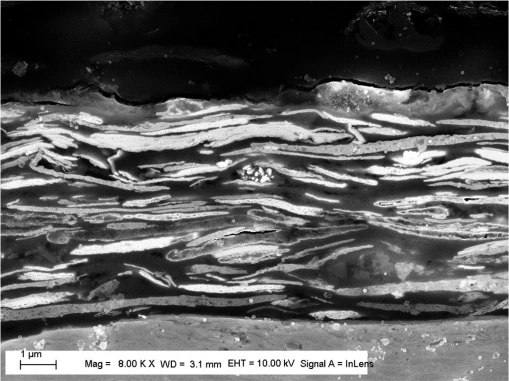
Sacrificial protection
Self Healing
Adhesion to substrate
Benefits of Zinc Flake Coating:
Exceptional Corrosion Resistance:
The zinc flake layer acts as a sacrificial barrier, providing outstanding corrosion protection to the underlying substrate. It offers superior resistance against moisture, chemicals, salt, and other corrosive elements, thereby significantly extending the lifespan of coated products.
Uniform Coating Thickness:
The application of zinc flake coating ensures consistent and uniform thickness across complex geometries, including recessed areas and threaded surfaces. This ensures comprehensive coverage and protection for all parts of your products, even those with intricate designs.
High Temperature Performance:
Zinc flake coatings are designed to withstand high-temperature environments, making them suitable for applications where exposure to heat is a concern. This makes the coating ideal for automotive, aerospace, and industrial components.
Low Environmental Impact:
Zinc flake coatings are environmentally friendly, as they are free from harmful heavy metals like lead and chromium. Additionally, the coating process itself involves minimal waste generation and can be easily applied using eco-friendly techniques.
Versatile Application:
Zinc flake coatings can be applied to various substrates, including steel, aluminum, and other metal alloys. This versatility makes it an excellent choice for a wide range of industries, such as automotive, construction, marine, and oil and gas.
GEOMET ®
GEOMET® 720
Corrosion protection
^ Results depend on substrate, geometry of parts and type of application processes.
720-2000 h
(ISO 9227/ASTM B117)
Temperature resistance
Static friction
Electrical properties
Paintability
No hydrogen embrittlement
GEOMET® 321

Corrosion protection
720-2000 h
(ISO 9227/ASTM B117/JIS Z2371)
Temperature resistance
Static friction
Electrical properties
Paintability
No hydrogen embrittlement
GEOMET® 500

Corrosion protection
720-2000 h
(ISO 9227/ASTM B117/JIS Z2371)
Lubrication
0.12-0.18
(ISO 16047}
Temperature resistance
Electrical properties
Paintability
No hydrogen embrittlement
ZINCROKOTE®
SIMPLIFIED TECHNOLOGY with GOOD PERFORMANCE
ZINCROKOTE® is a zinc flake anticorrosion coating using water- based chemistry. Derived from reference technologies developed by NOF METAL COATINGS, it is applied in 2 coats and meets corrosion resistance requirements up to 400 hours in salt spray test.
Coating with metallic silver appearance consisting of:
1 basecoat coat + 1 topcoat coat
Thin dry film, non electrolytic
- Water-based chemistry
Free from hexavalent and/or trivalent chromium, nickel and cobalt Passivated zinc and aluminum flakes in a binder
Characteristics and performance
- Adjustable coefficient of friction thanks to PLUS-family topcoats
- Performance maintained at elevated temperatures (up to 300C) .
- Electrical conductivity for most application
- Bimetallic compatibility with aluminum
- No hydrogen embrittlement
- Paintable coating
Corrosion resistance
Average thickness Salt Spray
Test (ISO 9227)
6 μm
> 72 hours without white rust
> 400 hours without red rust
Application processes
ZINCROKOTE® can be applied by Dip-Spin, using bulk or rack coating process
Health and Safety
- Aqueous dispersion
- Complies with REACH
Complies with the 2011/65/EU and (EU) 2015/863 directives
International standards
ISO 10683 – Fasteners: non-electrolytically applied zinc-flake coatings
EN 13858 – Non-electrolytically applied zinc-flake coatings on iron or steel parts
ASTM F1136/F1136 M – Zinc/Aluminum Corrosion Protective Coatings for Fasteners
Topcoats
Torquer Series
Preventing looseness / Cost reduction / Weight reduction The Torquer Series is effective in every situation

Increasing the size and number of bottles is not enough to prevent loosening.
The most effective way to prevent loosening is to stabilize the coefficient of friction and exert an appropriate tightening axial force.
01. Stable fasteninig axial force prevent looseness


02. A stable friction coefficient
03. Maximize the utilization of bolts without sacrificing performance
When the tightening torque is 20N*m, with M8 x 1.25 bolts (strength classification 6.8), only 7KN of tightening axial force can be obtained with non-lubricated bolts. However, when Neotorquer is applied, a tightening axial force of 17KN can be obtained.
In this way the Torquer series can maximize bolt performance.


04. No more increasing the size ir the number of bolts
PLUS® VL

Lubrication
0.09-0.14
Coefficient of friction (ISO 16047)
Corrosion
protection
Chemical
resistance
Color tracing
No hydrogen embrittlement
PLUS® VLh

Lubrication
0.09-0.14
Coefficient of friction (ISO 16047)
Corrosion
protection
Chemical
resistance
Color tracing
No hydrogen embrittlement
PLUS® ML

Lubrication
0.10-0.16
Coefficient of friction (ISO 16047)
Corrosion
protection
Chemical
resistance
Color tracing
UV tracing
No hydrogen embrittlement
PLUS® ML Black

Lubrication
0.10-0.16
Coefficient of friction (ISO 16047)
Cosmetic
Corrosion
protection
Chemical
resistance
No hydrogen embrittlement
PLUS® M

Lubrication
0.12-0.18
Coefficient of friction (ISO 16047)
Corrosion
protection
Temperature
resistance
Chemical
resistance
No hydrogen embrittlement
PLUS XL

Lubrication
0.06-0.09
Coefficient of friction (ISO 16047)
Corrosion
protection
Chemical
resistance
No hydrogen
embrittlement
PLUS L

Lubrication
0.08-0.14
Coefficient of friction (ISO 16047)
Corrosion
protection
Chemical
resistance
Color tracing
No hydrogen embrittlement
Plus 10

Corrosion protection
Chemical resistance
No hydrogen embrittlement
GEOMETPLUS® JL Blue

Lubrication
0.14-0.20
Coefficient of friction (ISO 16047)
Corrosion protection
Chemical resistance
GEOMETPLUS® JL Black

Lubrication
0.17-0.23
Coefficient of friction (ISO 16047)
Coloration
Corrosion
protection
Chemical
resistance
ECHOTE® WH700



